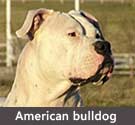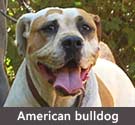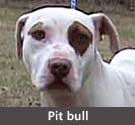
Justin Clinton, 10-years old, was brutally killed by two pit bulls belonging to a friend.
Family Files Suit
UPDATE 09/05/09: The mother of 10-year old Justin Clinton, who was mauled to death by two pit bulls in June, filed suit against the couple who owned the dogs. Serenia Clinton's lawsuit accuses Ricky and Christi George of gross negligence and carelessness and contends they are liable for Justin Clinton's death. They are seeking more than $100,000 and other damages to be determined by the court, attorney fees, costs of the suit and other relief from the dogs' owners.
The suit revealed that one of the dogs bit Ms. Clinton's son two weeks before the fatal attack on June 15. The earlier attack was concealed from the boy's mother, the lawsuit claimed, and the dogs had on numerous occasions prior to Justin's death been aggressive toward people while running loose in the neighborhood. The owners "knew or should have known of the two dogs' vicious propensities," stated the lawsuit prepared by Ms. Clinton's attorney, Cynthia Stevens Kent.
06/17/09: KLTV Pities Owners
KLTV 7 News dedicated a segment to the owners of the pit bulls that fatally attacked Justin Clinton. The segment appears to be a pit bull apology piece designed to paint the pit bull owners, Ricky and Christi George, as "victims." The story can best be described as deplorable in the wake of a young boy torn apart by the powerful jaws of these dogs. The piece also emphasizes that the dogs were not loose. In other words, the "victim" dog owners are not liable under Lillian's Law.
The segment also confuses1 viewers by calling the dogs American bulldogs2 instead of pit bulls or pit bull-mixes. This is a common tactic taken by pro-pit bull groups to try to lower the staggering number of serious and fatal attacks that have been attributed to pit bulls over the last 30-years. KLTV's attempt to mislabel the dogs (or attempt to confuse viewers) also contradicts Rusk County Sheriff Deputies which stated that there is "no doubt" that the dogs are pit bulls.




06/17/09: Owners Recently Purchased Dogs
The Kilgore News Herald reports that both dogs had formerly been owned by someone else in Kilgore. It is unknown if prior complaints were filed against them. Authorities said the dogs, a 3-year old male and a 2-year old female, had puppies in mid-February but none remained at the home now. Ricky and Christi George got both dogs, who have always been together, in February. The Georges' homeowners insurance had also reportedly lapsed because Ricky lost his job.
06/16/09: Full Scale Investigation Planned
News sources report that a Rusk County pit bull attack on Friday preceded the fatal pit bull mauling of Justin Clinton on Monday. Justice of the Peace Bob Richardson said a 4-year old girl was seriously attacked by a leashed pit bull in Henderson. During the attack, the dog's owner was walking the pit bull on a leash when it broke free and attacked. Officials were determining what to do with that pit bull when they were notified of the attack that left Justin Clinton dead.
Currently, Rusk County does not have a leash law. Yet as one can see, a leashed pit bull can still pose a significant threat.
TylerPaper.com, which covered the serious pit bull attack on Kristi Langston back in March, also reports that a "full scale investigation" is planned in the aftermath of Justin Clinton's death. Rusk County Sheriff Danny Pirtle said that the owners of the dogs could face felony charges under Lillian's Law. He also said the two pit bulls were put down about 30 minutes after they were confiscated from a home on County Road 133. The owners of the dogs remain unnamed.
06/15/09: Victim: 10-Year Old Justin Clinton
Leverett's Chapel, TX - In a developing story, authorities say two pit bulls fatally mauled a 10-year old boy in an East Texas town. The Rusk County Sheriff's Office said witnesses reported seeing the dogs drag Justin Clinton down the side of the road in the small community of Leverett's Chapel. A Tyler television station reported that a passing motorist pulled the dogs off the boy. The fourth-grader was later pronounced dead at Good Shepherd Hospital in Longview.
The Rev. Edwin Findley, acting on behalf of the dogs' owners, said "both families" have been hurt, even though only one family has a dead son.
The newest Texas fatal pit bull mauling (Rusk County) lies on the other side of Dallas (Stephens County), where 7-old Tanner Joshua Monk was killed by his neighbors four pit bulls in May of 2008. On March 26, 2009, 18-month old Tyson Miller was killed by a chained pit bull outside of his home in Luling (Caldwell County) and on March 31, 2009, 7-month old Izaiah Gregory Cox was mauled to death by his grandmother's two pit bulls in San Antonio (Bexar County).
 Related ZUPF video
Related ZUPF video
 Justin Clinton Memorial Fund
Justin Clinton Memorial Fund
Donations can be made to the Justin Clinton Memorial Fund at any Regions Bank in East Texas to help Justin's family pay for funeral expenses.
Related articles:
07/01/09: Justin Clinton's Family Starts Campaign: "Justice for Justin: Outlaw Pit Bulls"
04/21/09: Attack Victim's Husband: Pit Bull Regulation Sorely Needed
04/01/09: 2009 Fatality: 7-Month Old Boy Killed by Grandmother's Pit Bulls
03/31/09: 2009 Fatality: 18-Month Old Killed by Pit Bull in Luling, TX
10/11/08: Fatal Dog Mauling Trial of Tanner Joshua Monk, 7 Years Old






